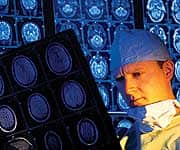Life Extension Magazine®
As a result of normal aging, key hormone levels decline, resulting in a detrimental impact on memory and cognitive function. Scientists believe that the hormone pregnenolone has vast potential for maintaining healthy cognitive function and may be “the most potent memory enhancer yet reported.”1 Pregnenolone is the first hormone in the pathway that generates a host of key neurohormones in the brain that are known to affect nerve cell growth and to modulate various moods. Pregnenolone therefore has a dominant effect in a wide range of nervous system functions. This is borne out in research that has demonstrated pregnenolone’s ability to reduce the risk of dementia and improve memory, while also alleviating anxiety and fighting depression. Increasing cognitive function is a key goal for any aging baby boomer. As natural levels of pregnenolone fall, ensuring optimal levels may represent a crucial cornerstone to every adult’s cognitive wellness program. The formation of memory is still one of the most fascinating functions of the brain. Scientists are learning more each day about how molecules and memories interact.2 An essential molecule in this interaction is pregnenolone, a key hormone that is the starting point for the production of many other important hormones in the body. There is strong evidence that pregnenolone levels diminish with advancing age and that restoring these levels may help alleviate deteriorating brain function. Before we review how pregnenolone boosts memory, let’s start with a look at the physiology of this essential hormone. What you need to know
Pregnenolone BasicsThe conversion of cholesterol to pregnenolone constitutes the first of many steps in the synthesis of some of the body’s key hormones, including dehydroepiandrosterone (DHEA), testosterone, progesterone, estrogen, and cortisol. Nicknamed “the mother hormone,” pregnenolone is a vital building block, being the very first (and arguably the most versatile) hormone in a cascade of molecular events.3 Like newly cut lumber, which can be processed into everything from building materials to facial tissue, pregnenolone’s final products fill myriad essential roles in the body, from stimulating memory via excitatory pathways to easing anxiety through inhibitory mechanisms.4,5
Pregnenolone was originally thought to be produced only in the adrenal glands and gonads (ovaries and testes). Somewhat surprisingly, the central nervous system (brain and spinal cord) also synthesizes this hormone.6 The discovery that certain steroids are produced and act in the central nervous system has led to the term “neurosteroids.”7 Another term, “neuroactive steroids” is often used for hormones that may be manufactured elsewhere in the body but have potent actions in the nervous system.8,9 Neurosteroids and neuroactive steroids can have powerful effects on how individual nerve cells function. In fact, we’re now learning that these complex little molecules can act in ways similar to the more familiar neurotransmitters—the chemical messengers between nerve cells.10 Absence or reduced concentrations of neurosteroids during development and in adults may be associated with neurodevelopmental, psychiatric, or behavioral disorders. Furthermore, normalizing levels of neurosteroids in the brain may promote neurogenesis (production of new nerve cells), neuronal survival, myelination (insulation to protect the nerve fibers), increased memory, and reduced neurotoxicity.11 These discoveries have, in fact, led to the development of a whole new field of research, sometimes called “synaptocrinology,” which refers to the actions of hormones at nerve junctions (synapses).12 Pregnenolone is therefore unique among the neurosteroids and neuroactive steroids, exerting exquisite control over a wide range of nervous system functions.13 As the body’s ultimate neurosteroid raw material then, it’s hard to overstress the importance of adequate (and reliable) pregnenolone supplies. To get a really good feel for just how vital a role pregnenolone plays in the nervous system, let’s take a quick tour of the mysteries of memory and emotion. Stimulation and MemoryDespite the apparent complexity of brain cells, or neurons, we can simplify matters considerably by thinking about their activities as either being stimulated or suppressed. Not surprisingly, most memory formation occurs as the result of stimulation of nerve cells. Stimulation generally results in the production of nerve branches known as dendrites, which connect to additional neurons, making the entire “switchboard” larger and more complex. These structures are formed by activating special “switches” in the brain. While there are a variety of such excitatory switches, the category called NMDA (N-methyl-D-aspartate) channels (or receptors) comprises the most important group. These channels must be activated for learning and memory to occur.14 Now, here’s where it gets interesting! The typical excitatory brain chemical that activates those memory-enhancing NMDA receptors is the amino acid glutamate, which is present throughout the brain.15 And while glutamate is critical for normal learning, too much excitation by glutamate over time can damage neurons—in fact, overstimulation, or excitotoxicity, by glutamate is thought to be one of the underlying factors in neurodegenerative disorders such as Alzheimer’s disease.16,17 What makes pregnenolone so important in this context is that it seems to trigger the NMDA channels18,19 through a mechanism that is independent of glutamate,20 which in turn may account for the observed neuroprotective effects of pregnenolone on brain cells.21 The bottom line of all this intricate science is that pregnenolone may play a pivotal role both in laying down memories in the first place, and then preventing their loss by directly protecting the nerve networks that store them! These complementary and versatile actions of pregnenolone are sending shock waves of interest through the scientific community because of the enormous implications for treating all sorts of age-related disorders of memory.5,22,23 Maintaining Healthy Pregnenolone Levels
Strong evidence from animal studies suggests that neurosteroid levels, including pregnenolone, diminish with advancing age.24 As pregnenolone is the parent compound of other vital neurosteroids such as dehydroepiandrosterone (DHEA),25 declining levels of pregnenolone could leave brain cells increasingly vulnerable to damage, such as overstimulation by neurotransmitters like glutamate.25,26 In fact, scientists have proposed that levels of neurosteroids such as pregnenolone could serve as biological “markers” of cognitive aging in laboratory animals, allowing us to examine the age-related impact of each neurosteroid on learning and memory.26,27 Some human studies have also shown a correlation between neurosteroid levels, especially DHEA, and cognitive function, although more research is still needed because of the implications for conditions such as age-related cognitive decline.24 Boosting Cognition and MemoryA decline in cognition as seen in Alzheimer’s disease is associated with decreased neurosteroid levels. Alzheimer’s disease is characterized by a build-up of harmful amyloid-beta plaques in the brain that block communication between nerve cells and disrupt the activities that brain cells need to survive. Evidence suggests that neuro-steroids such as pregnenolone may offer important neuroprotection in Alzheimer’s disease. When researchers introduced the destructive amyloid-beta protein into animal brains, the level of progesterone (a neurohormone synthesized from its direct precursor, pregnenolone) fell off dramatically.28,29 Likewise, in humans, Alzheimer’s disease patients have lower levels of pregnenolone, allopregnanolone (a pregnenolone metabolite) and DHEA-sulfate (DHEAS) in all the main memory-related areas of their brains, compared with control patients.30-32 Furthermore, the brains of patients with the highest neurosteroid levels display the lowest collections of the destructive amyloid-beta proteins.30 It therefore seems reasonable to speculate that as natural levels of pregnenolone and other neuro-steroids fall with aging and the onset of neurodegenerative diseases, supplementing with these vital compounds should have a neuroprotective effect. This is exactly what researchers have found. French scientists have paved the way in this field with their study of the effects of pregnenolone on cognitive aging. In fact, the results have been startling, with pregnenolone sulfate (the form found in brain tissue) completely reversing memory deficits in older, memory-impaired rats. 33 Even more remarkably, from a treatment standpoint, researchers have also shown that pregnenolone increases brain levels of acetylcholine, a key neurotransmitter required for optimal brain function, which becomes deficient in patients with Alzheimer’s disease.34 Acetylcholine is not only vital for thought and memory, it is also involved in controlling sleep cycles, especially the phase of sleep that is associated with memory (called paradoxical sleep or the random eye movement [REM] phase). Scientists have used this knowledge to study the effects of pregnenolone on sleep cycles and discovered that it dramatically increases memory-enhancing sleep. Together with previous findings that pregnenolone increases nerve cell growth (neurogenesis),11,35 researchers have concluded that pregnenolone can improve cognitive function in older animals by increasing acetylcholine levels, which stimulate new nerve cell growth in the brain areas most closely associated with memory and learning. Pregnenolone and Active LearningAs well as protecting against memory loss and even recovering some failing memory, pregnenolone and other neurosteroids are showing promising results in acquiring memory and learning in the first place. Research has shown that neuro- steroids improve memory performance in healthy animals and help restore memory in animals given experimental anesthesia-inducing drugs.36 Scientists from the VA Medical Center in St. Louis explored pregnenolone’s benefits in memory retention using a conditioning task in animals that involved learning to avoid a mild electric shock to the foot.37,38 To their surprise, they discovered that pregnenolone displayed beneficial effects in improving memory retention at almost incredibly low doses.1 They also found the response to pregnenolone was much faster than expected had the supplement been working like a typical neurosteroid, leading to the conclusion that something much more dramatic was going on. A team of French researchers found the first key to pregnenolone’s swift action. 39 They studied the effect of pregnenolone sulfate in mice after the administration of a drug called scopolamine, which prevents the formation of memories by blocking receptors for the neurotransmitter acetylcholine in the brain. They discovered the learning deficit induced by scopolamine could be prevented by pregnenolone within a very short time. Such a rapid effect of pregnenolone on memory processes led the team to conclude that it may be acting directly at receptor sites that are known to be active in memory formation. In other words, the researchers had confirmed that pregnenolone has both neurosteroid-like and neurotransmitter-like activities—a boon for the treatment of memory impairment. A second group of French researchers may have unlocked another door to the role of pregnenolone in learning. They found that pregnenolone dramatically stimulated the construction of ultramicroscopic structures called microtubules in brain cells.40 Microtubules are essentially tiny intracellular “muscles” that nerve cells use to rapidly rearrange their structures, making the myriad new connections that form the “structure” of memory. In fact, pregnenolone’s dramatic effect on “bulking up” nerve cells’ internal muscles brought interest in the hormone to a fever pitch in France, where, in 2004, a new private company was started to develop pregnenolone derivatives as pharmaceutical drugs for memory enhancement and the treatment of Alzheimer’s disease. Relieving AnxietyEvery silver lining has its cloud, however, and the brain’s intricate system for generating memory is no exception. Discoveries of memory enhancement by stimulating brain cells have led to the realization that overstimulating these pathways can also cause anxiety.4 In addition, many anti-anxiety drugs in common use today have an unpleasant side effect—they also impair memory and learning.42 Generally speaking, substances that enhance memory have the risk of producing anxiety, whereas those that allay anxiety pose the risk of impairing memory. Let’s see where pregnenolone fits into this seeming paradox. There’s remarkably good news here. Again it’s related to the speed with which pregnenolone acts on nerve cells, and on its role as the “parent” hormone that quickly gives rise to other hormones to counteract any potentially negative effect of overstimulating neuronal pathways. By providing a stockpile of raw material, so to speak, ample pregnenolone levels allow brain cells to manufacture just the right chemical (excitatory or anti-anxiety) at just the moment when each is needed.4,6
Here’s how it works: just as pregnenolone itself acts at excitatory receptors in the brain to stimulate nerve cell activity and enhance learning, other neurohormones produced from pregnenolone (such as allopregnanolone) act on inhibitory brain receptors, called gamma amino-butyric acid (A) (GABA(A)) receptors, which suppress brain cell activity to produce a calming, anti-anxiety, and even sleep-inducing effect.43 Research from a decade ago brought this point home dramatically.44 Scientists treated mice with anti-anxiety drugs called benzodiazepines (similar to Valium®) until the animals developed tolerance to the drugs (that is, the drugs no longer were effective). When the drugs were abruptly stopped, the mice developed marked withdrawal symptoms and anxiety, which were reduced markedly when pregnenolone sulfate was given at the same time as the anti-anxiety drugs. Pregnenolone also completely abolished the animals’ drug tolerance, a finding that has tremendous implications for human use, because of its potential to help patients discontinue long-term benzodiazepines. As neurosteroids are known to affect anxiety in humans as well,45 researchers from the University of California in San Francisco performed two studies of pregnenolone and anti-anxiety medications.46 First, they provided 17 healthy volunteers with either pregnenolone (15 mg by mouth for two weeks followed by 30 mg by mouth for two more weeks) or placebo for four weeks. Pregnenolone was well tolerated in this initial study. In the second study, the volunteers were given the anti-anxiety drug diazepam (Valium®) 0.2 mg as a single dose immediately after the first study. Individuals who had received pregnenolone in the first study showed significantly less sedation and a reduction in memory impairment after taking diazepam compared with those who had taken placebo in the first study. Furthermore, the anxiety-relieving effect of diazepam was unaffected. The researchers concluded, powerfully, that pregnenolone taken as a supplement while on an anti-anxiety medication could reduce many adverse effects of the medication, such as sedation and memory impairment. |
||||
Combating Mental Health DisordersThere is increasing evidence that lower levels of pregnenolone are associated with a variety of mental health conditions beyond anxiety, including depression, phobias, and even schizophrenia.9,47-49 In fact, one study published just this year revealed that schizophrenic patients with the lowest levels of pregnenolone were also most likely to have high levels of anxiety.50 Overcoming Chemical DependencyMany of the addictive substances humans consume can have potent negative effects on learning and memory—effects that are exacerbated by aging. Both alcohol and nicotine impair learning and leave long-term marks on memory as well. However, a number of studies have shown that pregnenolone sulfate overcomes the memory impairment caused by addictive substances such as alcohol and nicotine.51,52
These impressive findings have been echoed by another study looking into the effects of neuro-steroids in nicotine and morphine dependence—two problems that are faced by millions of older adults.53 Again, pregnenolone and other neurosteroids were shown to counteract the anxiety-like behavior that is associated with nicotine or morphine withdrawal. In fact, this study together with the recent discovery that pregnenolone and other neuro-steroids have potent effects on the so-called sigma receptors, which have long been associated with addictive behaviors,36 have generated tremendous excitement in the scientific community with the prospect that neurosteroids such as pregnenolone may offer powerful relief to sufferers of these tragic conditions.22 Safety ConsiderationsThe possibility that thousands of older adults may suffer from low pregnenolone levels is of concern. However, there is plenty of evidence favoring careful supplementation to prevent or mitigate memory loss and a host of other mental and emotional health issues. Because cancers of the breast, uterus, ovaries, and prostate may grow faster in the presence of sex hormones derived from pregnenolone,54-59 it’s important to collaborate with your health care provider if you have any such conditions, to be sure that supplementation is right for you.
Conclusion
Our knowledge of pregnenolone and its “family members,” the neurohormones, is at an exciting early stage. What we know is that these powerful molecules exert rapid and profound effects on vital brain structures, intimately affecting how we think, learn, and remember. It’s fair to say that studies of pregnenolone and other neurosteroids are changing the way we think about steroids and the actions of hormones in general. Animal studies and early human trials show promising results of supplementation with this exceptionally versatile natural substance. Furthermore, dozens of new trials that are now in progress will surely shed even more light in the future on how pregnenolone can help protect and promote healthy brain function. If you have any questions on the scientific content of this article, please call a Life Extension Wellness Specialist at 1-800-226-2370. | ||||
| References | ||||
|






